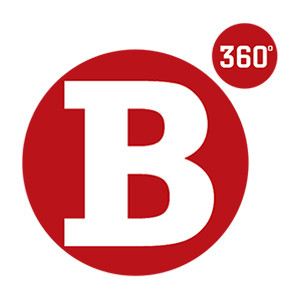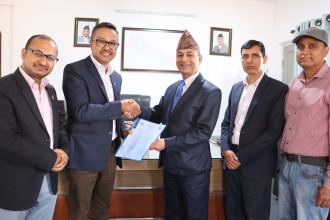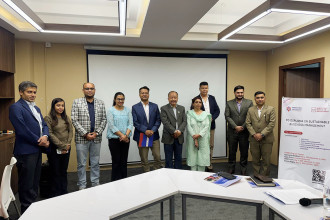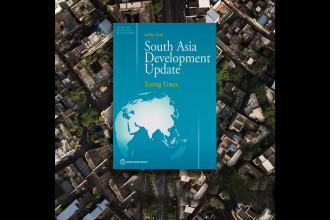-1745384760.jpeg)
KATHMANDU: South Asia Watch on Trade, Economics, and Environment (SAWTEE) organised a roundtable discussion titled “US-Nepal Trade in Uncertain Times” in partnership with Kathmandu University School of Management (KUSOM) on April 21, 2025. The event convened key stakeholders, trade experts, industrialists, academics, and diplomats to discuss Nepal’s response to US-imposed tariffs.
Paras Kharel, Executive Director of SAWTEE, provided terminology, facts, and figures on the aftermath of American "Liberation Day," a term coined by President Donald Trump on April 2, through his presentation titled "US-Nepal Trade in Uncertain Times," helping attendees establish a baseline understanding.
The 10% tariff proposed on Nepali exports to the largest importers of consumer goods is significantly lower than the 20% proposed for European Union member nations, 29% for India, and 20% for Pakistan. Industrialists have reported an increase in orders for the final fiscal quarter, as orders previously directed to China, the world’s largest manufacturing hub, are now being diverted to Nepal due to China’s proposed 125% tariff on imported consumer goods.
-1745384760.jpg)
-1745384760.jpg)
These tariff rates are based on whether nations operate at a trade surplus or deficit with the US. Countries whose exports to the US exceed their imports are considered to be in a trade surplus and are subject to tariffs ranging between 11% and 50%. Nepal, except for 2023, has operated at a trade deficit with the US since 2019. A 10% increase in tariffs on Nepal’s exports to the US could result in a 0.0096% decline in Nepal’s Gross Domestic Product (GDP), according to the report titled "Decoding US Reciprocal Tariffs: A Nepali Perspective," authored by Paras Kharel and Kshitiz Dahal, Senior Research Officer at SAWTEE.
The initially observed tariff advantage is now uncertain due to a 90-day pause on the full implementation of the reciprocal tariffs scheme and ambiguities regarding how, or whether, the programme will continue. Despite this uncertainty, Nepal’s existing quality, reliability, supply chain, pricing, timely delivery, and the "preference margin" of Nepali exports remain unchanged.
The roundtable discussion encouraged participants to consider the situation from the perspective of American policymakers. Since the influx of export opportunities could result in Nepal moving into a trade surplus with the US, tariff rates may fluctuate in subsequent years under the current policy. Moderator Posh Raj Pandey, Chair Emeritus of SAWTEE, opened the floor for debate on Nepal’s direction moving forward and the tools at the nation’s disposal to negotiate fair rates once the temporary pause on implementation expires.
The discussion sparked strong engagement among participants. Pandey encouraged attendees to consider both the Nepali perspective and that of Americans facing economic uncertainty due to the tariff impositions. Discussions minimised Nepal’s ability to significantly influence outcomes and instead focused on turbulence caused by China’s response to the imposed tariffs and subsequent reciprocal measures. While a wide range of factual and historical arguments were presented, some participants offered optimistic predictions for Nepal’s future. Representatives from the Institute for Integrated Development Studies (IIDS) view this situation as an opportunity for localised growth among Nepal’s small and mid-sized industries.
"Nepal, until it establishes itself as an indispensable part of the global value chain, can remain in a wait-and-watch mode," said Madhu Kumar Marasini, Senior Fellow at SAWTEE and former finance secretary. This outlook was shared by Achyut Wagle, Vice-Chancellor of Kathmandu University, who highlighted Nepal’s lack of backward linkages in key export sectors. He pointed out that industries such as readymade garments remain heavily dependent on imported raw materials, including textiles and yarn. In these sectors, Nepal may develop as a result of US policies.
SAWTEE remains focused on strengthening Nepal’s trade capacity through research-based evidence and engagement with stakeholders.
READ ALSO:
- SAES XV: South Asia's Path to Regional Cooperation, Sustainable Development
- 15th South Asia Economic Summit concludes with calls for equitable green transformation
- 15th South Asia Economic Summit begins in Kathmandu
- SAWTEE, IFPRI workshop explores informal cross-border agri-food trade
- SAWTEE, TAF hold seminar on trade policy and economic diplomacy






